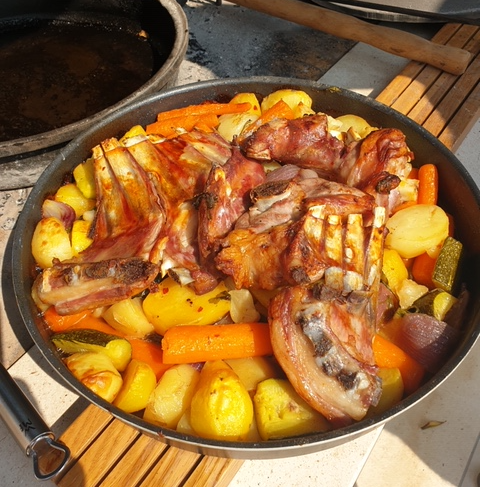Only seasonally influenced by tourism, the small islands off the Dalmatian coast of Croatia are the perfect place to catch a glimpse of the traditional Mediterranean lifestyle. With the absolute philosophy of “work to live and not live to work” and all things revolving around the crystal clear waters of the Adriatic Sea, Croatia is one of true “Med” cultures that remain. But don’t get me wrong, Croatians work hard. Its just that the work philosophy does not seem to stem as much from a capitalist or materialistic origin, but more from a patriotic “family-first” (including neighbours) attitude, which is charming in it’s own way. Though, as a tourist, interactions can be a bit challenging, as an observer, a North American can only hope to immerse in some of this philosophy and attempt to cleanse from our capitalist society.
Arriving at the brand new airport in Split, right away you can tell you are in Europe by the overpowering smell of burning tobacco. Split is a stunning and bustling city of 350000 and the second largest in the country of Croatia. When you arrive here, although amazing to see, my sense was to “get out of town” as quickly as possible as the energy is very much that of a larger city. So we jumped into our rental van and headed for the ferry.
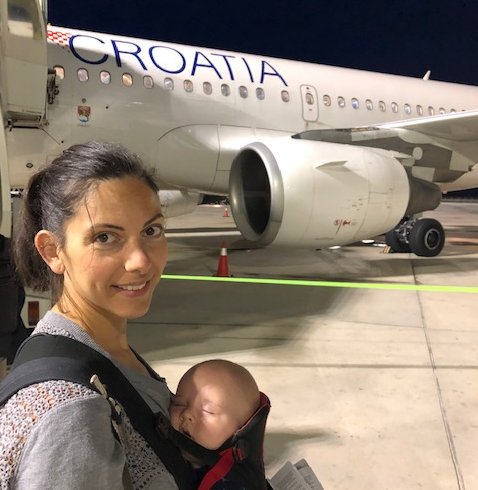
“Twinning” my life in Vancouver, the drive from Split airport to the Jadrolinija ferry terminal in the heart of Split was in many ways similar to my drive from North Vancouver to Horseshoe Bay ferry terminal, only envision a much more reckless and chaotic commute where people don’t seem to like staying in their own lane of traffic. The ferry commute to the Island of Brac was also eerily similar to being on the ferry home to the Sunshine Coast, only once again complete chaos with pedestrian loading and car loading and offloading occurring at the same time and of course the chain smoking. In fact, the Jadrolinija ferry experience makes the BC Ferries look good, but there is also a sort of charm to the flow of things in Croatia.
Arriving in the largest town on the island, Supetar, our destination was roughly 50 kms across the island to the small fishing village of Sumartin. With a population of only 500 people, right away you get the feel for life in Croatia; relaxed, as long as you don’t disturb the peace. And thanks to my father in law, our accommodations were world class and could not have been more idealistic for my underlying desire to integrate into the Mediterranean lifestyle as quickly as possible. Located right across a tiny access road from a semi-private little beach with individual guest suites, our place was topped off with an outdoor kitchen, eating area and infinity pool. Because Brac is famous for white stone, apparently the very same that the White House in Washington DC was built from, all of the houses are made from beautiful stone and dot the steep terrain surrounding the sea.
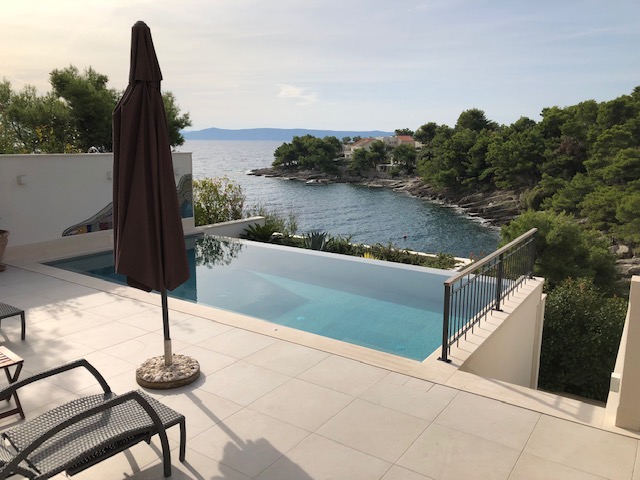
Our days in Croatia, as one can hopefully imagine when travelling with our 4 month old son Arlo, were focused almost entirely on sleeping, reading (Being Moral and A Gentleman in Moscow), exercising, and of course eating. And the food, being one of my main objectives to discover on this trip, was far from disappointing. Breakfast in the “Med” is mostly carbohydrates though, so 80% of the time I opted for intermittent fasting and a 1 hour mountain bike ride through the rugged hills of olive trees that cover the south eastern part of the island. As part of my ride, I would bike into town to gather supplies at the everyday open-air fruit and vegetable market, the tiny grocery store and occasionally the butcher. These outings were cherished for some of the much needed self-reflection time, essential to a good vacation, and to really provided a sense of what living on the island of Brac would be like.
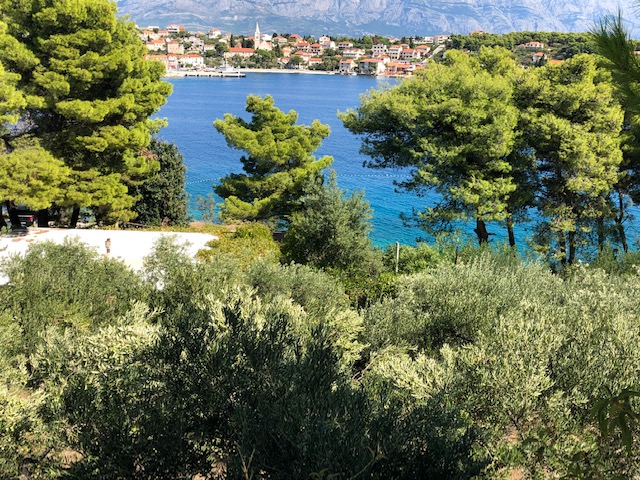
People in Croatia seem to be early to bed and early to rise, much like Emily and I at home, so adapting wasn’t hard. And its no wonder because of the arid and generally hot climate, people are up early maintaining their land (or at their jobs) when its cool, and swimming, eating and otherwise relaxing in the afternoon when it is hot. In general, especially on the island where supplies are more limited, everyone seems to maintain some kind of permaculture set up, growing citrus, grapes, olives, herbs, veggies and other fruits. A true homesteading culture, most families also seem to fish or hunt, on top of maintaining their garden plots. The other amazing thing that I need to mention, is that in Croatia, the elderly are generally taken care of by the community, so its common for neighbours to hangout with each other, regardless of age, and share or trade what they have.
So enough about the culture, lets get into the food. In Croatia, food is amazing and SO inexpensive! Fruits and veggies are almost always local organic and cost pennies on our dollar. Olives literally grow on trees and most towns have an olive oil processing facility that makes 100% pure organic olive oil. And dairy is generally less common in the form of cows milk and cheese, being replaced with incredible cheeses made from goat or sheep milk. Although bread is a staple food subsidized by the government, like in most Mediterranean cultures it is not the focus of the lunch or dinner meal so sandwiches generally do not exist. Also, being on the ocean, in general the Dalmatian diet is centred around seafood and wow is the seafood ever amazing, and once again pennies on the dollar. Scampies, shrimp, octopus, muscles, and many types of fish are found everywhere, and often can be purchased right of the boat.
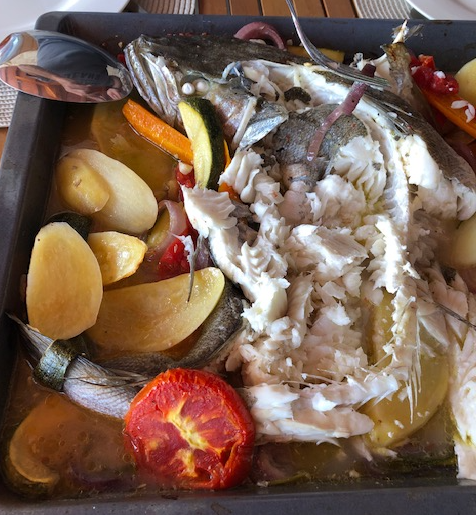
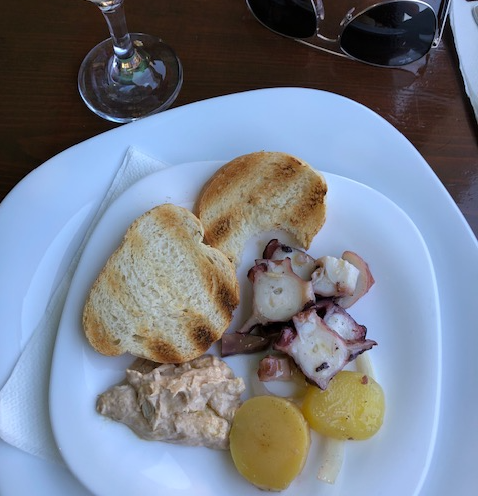
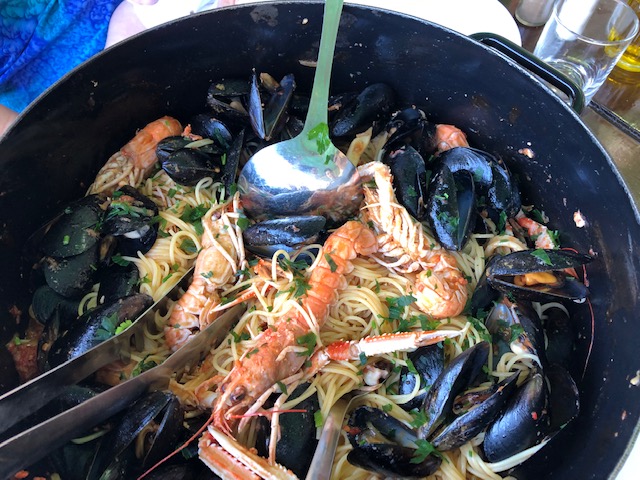
On this trip, like most trips I have taken to Europe, the main dining experience revolved around a 1 pm to 2 pm lunch. And in Croatia it was generally a lunch of either “Peka” or seafood in various forms. But before I get into details, it is important to consider the hours of planning and preparation that can go into a simple meal. With a seafood meal, it starts with a 6 or 7 am trip to the open air fish market 50 kms away or a 5 or 6 am adventure to the local fishermen, if anything is available. With lamb, you need to go to the lambing town and with chicken … “I know a guy”. So generally everything revolves around protein … which I can relate to. The veggie portion of meals is almost always the same, potatoes, zucchini, peppers, onions and garlic in a soup of pure olive oil and tomato and cucumber salads on the side. So once everything was prepped, my job was to start the cooking fire in the outdoor fire place that everyone seems to have.
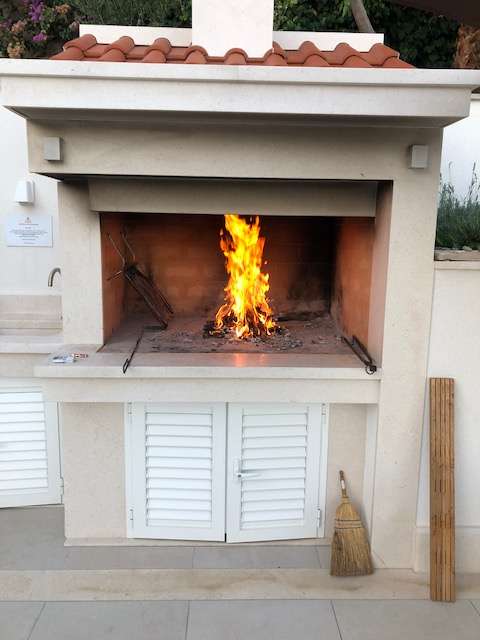
Like any traditional cooking fire, the objective is coals not ash, so typically a hard wood is used for the best results. Once the charcoal is sufficient, larger chunks are removed and placed into a second fire for later, while a nice consistent pile of hots coals remains. The peka is cooked in a 30 to 40 lb cast iron pot with a lid, so think old school “Instapot”, where the ingredients are loaded into the pot, dosed with olive oil, then the lid is placed on and an olive oil seal is created so the pot does not leak steam. The pot is then placed on a brick surface and surrounded in coals over the top of the pot and the sides. The initial cooking takes roughly 30 minutes, regardless of the content of the pot. After that initial cook the lid is removed and the contents are given and poke and a seasoning and then cooked again until done. So a typical meal from beginning to end takes about 3 hours, give or take.
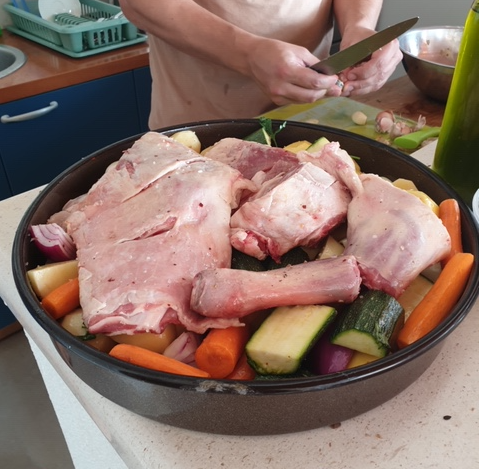
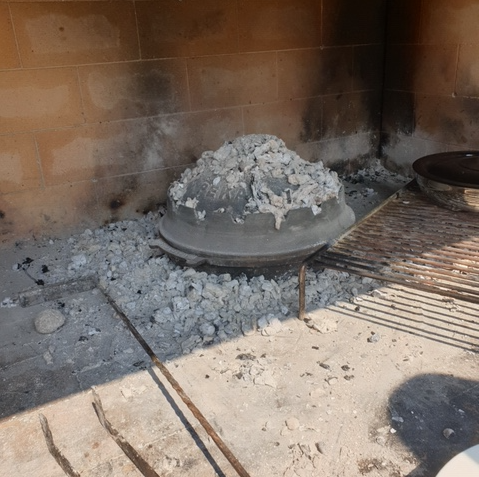
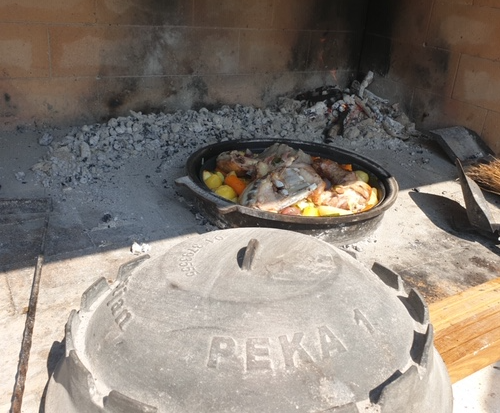
The “Peka”, was by far my favourite thing to eat in Croatia, and certainly one of the top 5 things I have eaten ever. I guess the contents are nothing special, but the way the Peka seems to preserve the flavours of the foods that it embraces makes the meal taste like nothing you have eaten before. And with the pure olive oil and fall off the bone goodness, without even the slightest hint of being over cooked, Peka is true testament to the Croatian culture. So, needless to say that I left Croatia knowing I needed to build my own outdoor oven, and bring Peka home to Canada!
